- Home
- H. R. F. Keating
Agatha Christie Page 11
Agatha Christie Read online
Page 11
Not by any catchphrases can Westmacott be put into a Christie category. The books are not concerned with ‘breathless romance, intrigue and suspense… tangled lives and star-crossed passions… dangerous secrets’, as has been written of them. Westmacott was a distinctly different person from the mystery writer, Agatha Christie.
The six books are actually all a part of the same book. In the whole they are the fictionalized autobiography of Dame Agatha. Properly the autobiography begins with the second, Unfinished Portrait (1934). Christie could not have given many interviews before that time, at least not about her childhood and youth, or the Mary Westmacott identity would have been revealed immediately. In Unfinished Portrait, Larraby, a portrait painter, frames the story, thus making the pretence that it is a story, not a personal revelation. Yet there can be no doubt that Celia, the unknown woman he presumedly met and spoke with, is Christie, so much younger than others of her family that she is in effect an only child, the beloved of her mother.
Mary Westmacott writes beautifully of children: ‘Then there were the things you thought about in the daytime. Nobody knew that as Celia walked sedately along the road she was in reality mounted upon a white palfrey. (Her ideas of a palfrey were rather dim. She imagined a super horse of the dimensions of an elephant.) When she walked along the narrow brick wall of the cucumber frames she was going along a precipice with a bottomless chasm at one side. She was on different occasions a duchess, a princess, a goose girl and a beggar maid. All this made life very interesting to Celia, and so she was what is called “a good child”, meaning she kept very quiet, was happy playing by herself, and did not importune her elders to amuse her… Celia seldom asked questions. Most of her world was inside her head. The outside world did not excite her curiosity.’
The book tells of her father’s illness and early death, her mother travelling in grief, while the child lives with her superb grandmother:
In figure she was majestically stout with a pronounced bosom and stately hips. She wore dresses of velvet or brocade, ample as to skirts, and well pulled in round the waist. ‘I always had a beautiful figure, my dear,’ she used to tell Celia. ‘Fanny – that was my sister – had the prettiest face of the family, but she’d no figure – no figure at all!… As thin as two boards nailed together. No man looked at her for long when I was about. It’s figure the men care for, not face.’ ‘The men’ bulked largely in Grannie’s conversation. She had been brought up in the days when men were considered to be the hub of the universe. Women merely existed to minister to these magnificent beings.
The character of Grannie in part prefigures Miss Marple.
Grannie was never idle. She wrote letters – long letters in a spiky spidery handwriting, mostly on half sheets of paper, because it used them up, and she couldn’t bear waste. (‘Waste not, want not, Celia.’) Then she crocheted shawls – pretty shawls in purples and blues and mauves. They were usually for the servants’ relations. Then she knitted with great balls of soft fleecy wool. That was usually for somebody’s baby. And there was netting – a delicate foam of netting round a little circle of damask. At tea time all the cakes and biscuits reposed on those foamy doilies…
And again:
The night air, Grannie said, was highly injurious. Air of all kinds, indeed, she regarded as something of a risk. Except on the hottest days of summer she rarely went into the garden, such outings as she made were usually to the Army and Navy Stores – a four-wheeler to the station, train to Victoria, and another four-wheeler to the stores. On such occasions she was well wrapped up in her ‘mantle’ and further protected by a feather boa wound tightly many times round her neck.
It is this grandmother who takes the little girl on train trips to London, where they lunch at the Army and Navy Stores, and Celia is introduced to the magic of the theatre. All of Christie’s girlhood is herein, the musical year in Paris, the fashionable season in Cairo, the suitors and the proposals, the love marriage which became the failed marriage, and which broke her beautiful world apart. In the end is the repetition of the beginning, as she, the mother, is raising an only daughter. There is even included in this story her own explanation of her strange disappearance and of an amnesia which was less forgetting than dreaming. Unfinished Portrait is told with a minimum of plot, in its stead is remembrance of times past. The portrait is unfinished as her life was yet unfinished.
The first Westmacott, Giant’s Bread (1930), was autobiographical only in bits and pieces. It would seem to be the story of others she knew, knew closely, composites to be sure, because few if any writers go in for the verities in their portraitures. Little Vernon has the same good no-nonsense nurse that Celia will have, he even has the identical nursery wallpaper with ‘mauve irises twining upward’. Both children have dear imaginary playmates before meeting with real children. Both are dreamers, of course, for the child Vernon, when not fictional, is the child Celia.
What was the word – the magic word? Brumagem – that was it – Brumagem. An enchanting word! The Princess Brumagem! A word to be repeated over to himself softly and secretly at night… Sitting on the slippery chintz, he frowned perplexedly. He had a sudden imperfect glimpse of two Mummies. One, the princess, the beautiful Mummy that he dreamed about, who was mixed up for him with sunsets and magic and killing dragons – and the other, the one who laughed and said, ‘Aren’t children too funny?’ Only of course they were the same… He fidgeted and sighed.
‘What’s the matter, Master Vernon?’
‘Nothing,’ said Vernon. You must always say, ‘Nothing.’ You could never tell. Because if you did, no one ever knew what you meant…
Vernon, a girl cousin who comes to live with him and his mother, and a small London boy on the next estate are inseparably tangled in each other’s lives in maturity as well as in childhood.
In Giant’s Bread, there is what must be mentioned, to us of the post-Hitlerian period, a familiar form of anti-Semitism. Yet Mary Westmacott, the product of her culture, her class, and her times, might well have considered her handling of Sebastian to be one of forthright liberalism. Vernon is an anti-hero, years before they became fashionable. Sebastian is the stable and sympathetic character, a Cambridge graduate, eventually an important London impresario, who is an intelligent businessman as well as a man of impeccable artistic taste. Westmacott’s attitude to him must be little different from Queen Victoria’s to Disraeli. He was a beloved friend, a man of fine character, brilliant in all respects, but always, the Jew.
In the ten-year period when Mary Westmacott lay fallow, Agatha Christie was, as we know, a whirlwind of activity, moving from honours and triumphs to the topmost Alp of the mystery field. Here she would remain. Yet Mary Westmacott could not be forgotten. She had more to say, and it could not be said in the medium in which Agatha Christie worked. The mystery novel, like the theatrical play or the sonnet, is contained within a prescribed pattern. The writer may wander a bit but not far, not and stay within the form.
When Mary Westmacott returned in 1944, she brought with her Absent in the Spring. Shakespeare gives the title and introduces the theme of the story: ‘From you have I been absent in the Spring…’ Of all the books created by either Christie or Westmacott, this one, even if it was born to blush almost unseen, must have given the most complete satisfaction, possibly even the exaltation which comes so rarely to a writer. For this is the perfect story, simple, bittersweet, ironic, expressing the heartbreak of love unfulfilled yet fulfilled.
The story concerns Joan, a wife and mother, who has never questioned her own values, who has managed a charming home for her husband and her three children, who has always done the proper thing. That her children married young to get away from home; that her husband, who wanted to farm the land, not become a solicitor, has retreated into himself, are facts which would never occur to her. Until she is marooned at a desert way-station en route from Baghdad, where she has been visiting her younger daughter, to Istanbul. She finishes reading her two books. She quickly uses up
her bit of writing paper. And she is left with nothing, nothing but to learn about herself. Through her, Westmacott says that unless you have heights and depths, you are missing life, that there is a richness in the lives of those who know suffering, and an ‘arid nothingness’ in those who keep themselves insulated. In her blinding moments of self-revelation, Joan becomes aware of the love her husband had for another woman in their village, a woman who, to her, was nothing, nobody.
Little wonder the exquisite quality of this book was not discovered, when one reads that it concerns ‘a husband’s secret life’ and ‘the mysterious hold that beautiful Leslie Sherston had for him’. Compare Westmacott’s design for Leslie Sherston: ‘She walked through disillusionment and poverty and illness like a man walks through bogs and over plough and across rivers, cheerfully and impatiently, to get to wherever he is going…’ The gallantry of Leslie and Rodney makes ‘the unbearable bearable’ as Archibald MacLeish said of poetry.
The theme of the desert, which is noted in one way or another in all the Westmacott books, is fully developed here. Westmacott distils the great clarity of desert light, the space and infinite solitude which compel a person to look into himself. And which also compel a person to know the presence of God. Perhaps the Westmacott readers alone are aware of what a strongly religious person Mrs Christie was. Prayer was a way of her life and the presence of God an integral part of living.
It is only meet that her next book should be inspired by both poetry and religion. The introduction and title of The Rose and the Yew Tree are from Little Gidding, the final section of T. S. Eliot’s Four Quartets. ‘The moment of the rose and the moment of the yew tree are of equal duration.’
The story is a retelling of the legend of Beauty and the Beast. But Westmacott does not accept its progress as simply a fairy tale. She asks: Why? What impels Beauty to go by choice with the Beast? Why does she offer herself as sacrifice for him? The answer to all is love. Love which can be completed only in sacrifice. Yet this answer does not probe deeply enough for the author. Metaphysically she advances to the question: ‘Does one ever really have a choice about anything?’
We do not know if Mary Westmacott became possessed by the riddle of time through her preoccupation with Eliot’s poetry. Or if it was her dwelling upon the riddle which led her to Eliot. We do know that the theme of time is interwoven through all of the books, in the later ones in some depth. She ponders it in The Rose and the Yew Tree, but she does not evolve her final answer until The Burden, where, in the character of Mr Baldock, she states: ‘The truth is, we’re all slavishly obsessed by Time. Chronological sequence has no significance whatever. If you consider Eternity you can jump about in Time as you please. But no one does consider Eternity.’
It is no less in its people than in its themes that the books are all of a piece. Characters move from one setting to another, putting on a new name or face. Mr Baldock is part the nurse and part the grandmother, crusty but kind of heart. He is described as having a chair at the university, with a small cottage in the village where Laura, leading character of The Burden, when a little girl of ten, becomes his friend. On his first appearance he has invited Laura to tea but pretends he has forgotten the invitation. Later he tells her that he only made this pretence to see what she would say, and to have her see him as he is, ‘a rude, ungracious old curmudgeon’. The tea he serves her is a child’s dream tea, ‘currant buns, jam roll, éclairs, cucumber sandwiches, chocolate biscuits and a large indigestible-looking rich black plum cake’. Laura gives ‘a sudden little giggle’, and confirms: ‘You did expect me. Unless – do you have a tea like this every day?’ ‘God forbid,’ said Mr Baldock. In another passage, his character is revealed in his reaction to a glimpse into Laura’s dream world. ‘ “Bad butter,” said Mr Baldock. It was one of his expressions of perturbation. “Bad butter! Bad butter!” ’
Mr Baldock is the only rock of Laura’s world, both when she is a child and as an adult. As Nurse is Vernon’s security, and, during her mother’s illness, the grandmother is Celia’s. Dame Laura in A Daughter’s a Daughter may be a noted Harley Street practitioner, but in her more sophisticated habit she is the same common-sensical wise woman as Nurse and Nannie and Grandmother.
She is also in part another of the self-portraits of the later Christie: ‘ “Like all old women, even if I am a distinguished one, I preach.” She drains her glass of buttermilk and asks, “Do you know why I drink this?” “Because it’s healthy?” “Bah! I like it. Always have since I went for holidays to a farm in the country. The other reason is so as to be different. One poses. We all pose. Have to. I do it more than most. But thank God, I know I’m doing it.” ’
It is through these character actors that Westmacott comes to terms with life. They are Chorus, wise, understanding, pragmatic.
The final two books, although entirely separate in the story sense, are at one in their theme. Sacrificial love destroys, not redeems. Oddly enough, Westmacott uses the same name for a lead character in both. In the first, Dame Laura is the strength which manages, just, to save the mother and daughter from each other’s devotion. In The Burden, Laura is the sister who takes on the burden of love. This is not the only instance where Westmacott repeats herself. Jim Grant, the freckle-faced boy farmer of Unfinished Portrait, becomes in A Daughter’s a Daughter Jim Grant, army officer. One would consider it mere carelessness save that the books could not have been written carelessly; they are too finely wrought for that. It is true enough that most authors cannot remember character names from the opening to the closing of a book. Nevertheless with a favourite Christie character, which Dame Laura is, it is difficult to believe that in the very next book the name would be used again for a prominent character, not without purpose. Perhaps these oddities compose a cryptogram which we shall decipher when the unpublished Christie papers give us the proper clues.
For all the pain of living, these are not unhappy stories. There is in them affirmation of life, not its negation. Furthermore they give added values, such as we learned to expect from Christie in her sunset years. And there are moments of fun.
One of these extras comes in the closing book with Mary Westmacott’s little lesson to readers. It may be a put-on, but it is more than that. Particularly for those who never learned to read Mary Westmacott properly. Mr Baldock asks the child Laura: ‘How do you read a book? Begin at the beginning and go right through?’
When she replies, ‘Don’t you?’ he tells her: ‘No, I take a look at the start, get some idea of what it’s all about, then go on to the end and see what the fellow has got to say and what he’s been trying to prove. Then I go back and see how he’s got there and what’s made him land up where he did. Much more interesting.’
Laura says: ‘I don’t think that’s the way the author meant his book to be read… I think you should read the book the way the author meant.’ And the irrepressible Mr Baldock declaims: ‘The reader’s got rights too. The author writes the book the way he likes. Has it all his own way. Messes up the punctuation and fools around with the scene any way he pleases. And the reader reads the book the way he wants to read it, and the author can’t stop him.’
A Midas Gift to the Theatre J. C. TREWIN
1
It is well over fifty years since ‘the world’s greatest thriller’ – so its management said – John Willard’s The Cat and the Canary, reached London to the jingle of a distich:
If you like this play, please tell your friends;
But pray don’t tell them how it ends.
To give away a puzzle is a darker crime than anything done on stage. That was why so many were furious when an evening-paper critic of Towards Zero, out of tune with Agatha Christie, revealed the murderer’s name in his last paragraph, indeed the last three words. A rare lapse; no one has repeated it. (In any event, the piece survived for six months.) Through the years playgoers and critics joined in keeping any secret Mrs Christie confided to them, and her trust was honoured; it astonishes us even now
in London The Mousetrap can still be acted before audiences with no idea of its development or climax.
Agatha Christie, by herself, wrote twelve full-scale plays (one published, not performed) and three in a single act. She collaborated in another full-length play; four more, from her novels or short stories, were adapted by other hands. It was fitting, I think, that her final one-acter, The Patient (1962), depended on its curtain-line. Whatever else was wrong, nobody sustained a problem as she did, or solved it so quickly without a tedious explanatory huddle. This was her Midas gift to the theatre. ‘Upon my soul,’ exclaimed Dickens’s Barnacle Junior, ‘you mustn’t come into the place saying you want to know, you know.’ Agatha Christie’s fans did want to know. In the later plays they may have found it a lagging wait. Never mind: having been in at the death they insisted on a post-mortem verdict.
By the time she had fully arrived, a dramatist on her own, what someone christened the Deep Freeze period had ended. These were plays, often American, in which a writer used unscrupulously any kind of effect that might chill. It might also be comic; he had to risk that. The Cat and the Canary began about midnight (ideal for a will-reading) in an isolated house by the Hudson River, twenty years to the hour after the testator’s death. The place, with adjustable panelling, was staffed by a West Indian servant and a farcical housemaid – possibly in curl-papers; I am not sure. Characters included a Keeper of the Asylum. About the same season the cast of another play, an English one planked down surprisingly in deep Norfolk, contained a Modern Girl (the dramatist’s capital letters), a Secret Service agent, an American Orientalist, an Indian butler, a Chinese servant, a handy man, and Kali, a Manchurian leopardess. Thrillers then could have grabbed a classic epigraph: ‘Nothing is but what is not.’ Everybody was either someone else or an irrelevant eccentric. John Gielgud, as a young actor, fought through a rattle-trap entitled The Skull (a detective as its criminal): it was established in a deserted church with a ghostly organist, and, as Gielgud said resignedly, a comic spinster in difficulties, an old professor with a cloak, and a cockney sexton with a club-foot, to help the thing along.

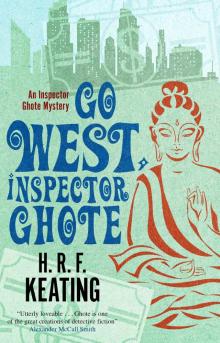 Go West, Inspector Ghote
Go West, Inspector Ghote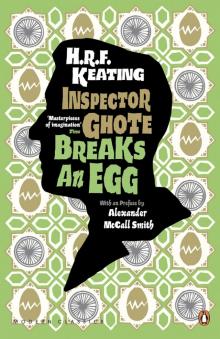 Inspector Ghote Breaks an Egg
Inspector Ghote Breaks an Egg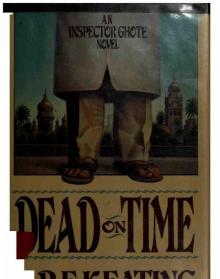 Dead on Time
Dead on Time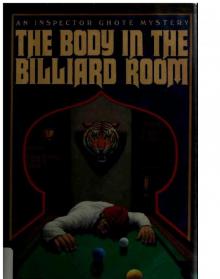 The Body in the Billiard Room
The Body in the Billiard Room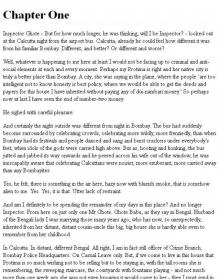 Bribery, Corruption Also
Bribery, Corruption Also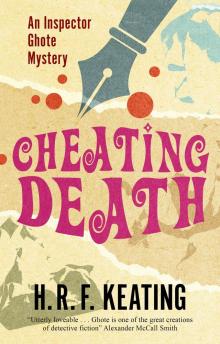 Cheating Death
Cheating Death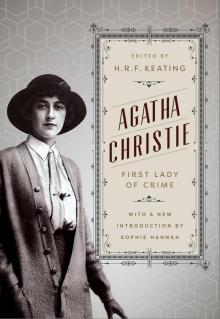 Agatha Christie
Agatha Christie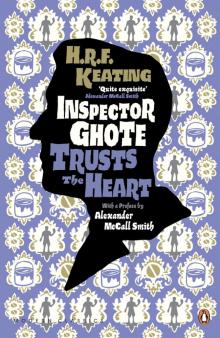 Inspector Ghote Trusts the Heart
Inspector Ghote Trusts the Heart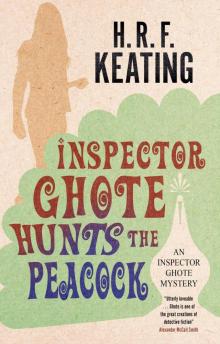 Inspector Ghote Hunts the Peacock
Inspector Ghote Hunts the Peacock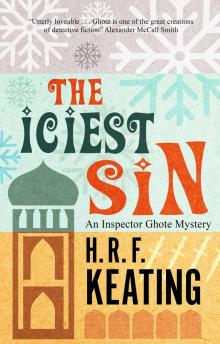 The Iciest Sin
The Iciest Sin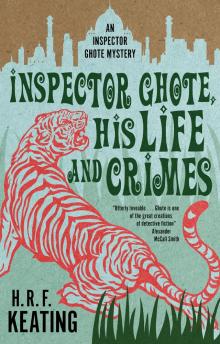 Inspector Ghote, His Life and Crimes
Inspector Ghote, His Life and Crimes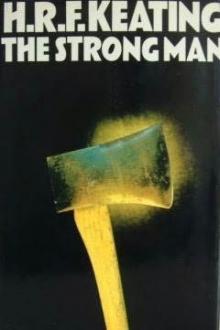 Strong Man
Strong Man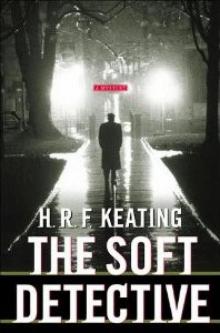 The Soft Detective
The Soft Detective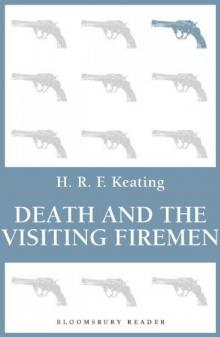 Death and the Visiting Firemen
Death and the Visiting Firemen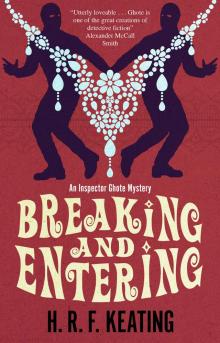 Breaking and Entering
Breaking and Entering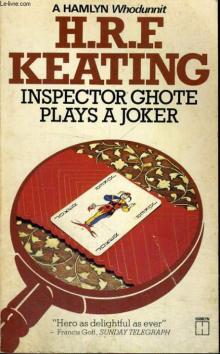 Inspector Ghote Plays a Joker
Inspector Ghote Plays a Joker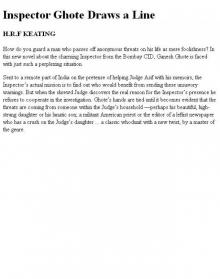 Inspector Ghote Draws a Line
Inspector Ghote Draws a Line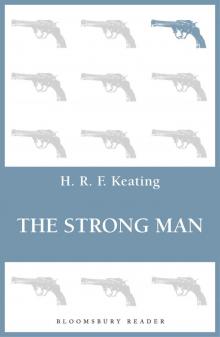 The Strong Man
The Strong Man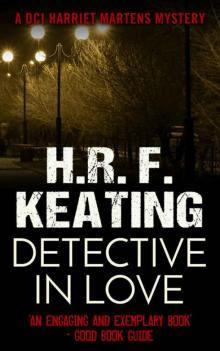 A Detective in Love (A Harriet Martens Thriller Book 2)
A Detective in Love (A Harriet Martens Thriller Book 2)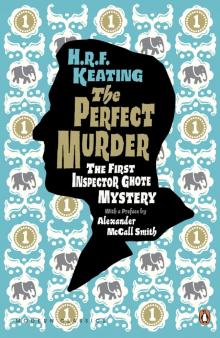 The Perfect Murder: the First Inspector Ghote Mystery
The Perfect Murder: the First Inspector Ghote Mystery Inspector Ghote's Good Crusade
Inspector Ghote's Good Crusade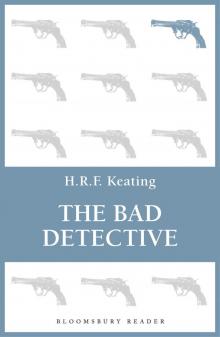 The Bad Detective
The Bad Detective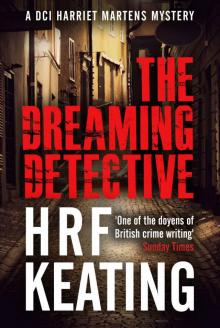 The Dreaming Detective
The Dreaming Detective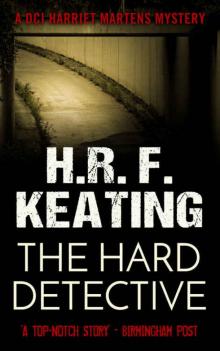 The Hard Detective (A Harriet Martens Thriller Book 1)
The Hard Detective (A Harriet Martens Thriller Book 1) The Dog It Was That Died
The Dog It Was That Died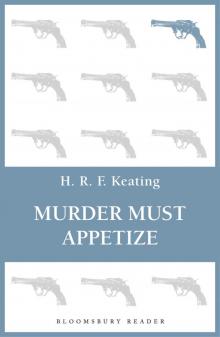 Murder Must Appetize
Murder Must Appetize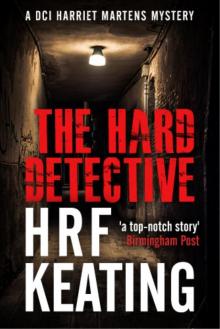 The Hard Detective
The Hard Detective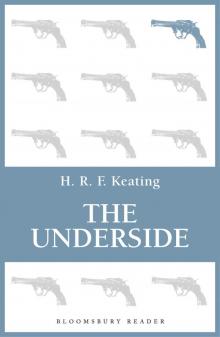 The Underside
The Underside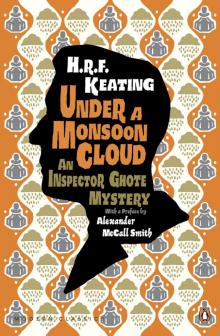 Under a Monsoon Cloud: an Inspector Ghote Mystery
Under a Monsoon Cloud: an Inspector Ghote Mystery Is Skin Deep, Is Fatal
Is Skin Deep, Is Fatal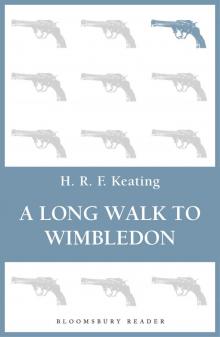 A Long Walk to Wimbledon
A Long Walk to Wimbledon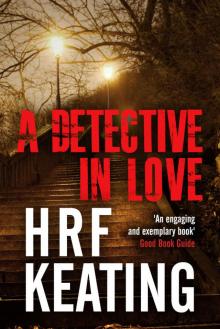 A Detective in Love
A Detective in Love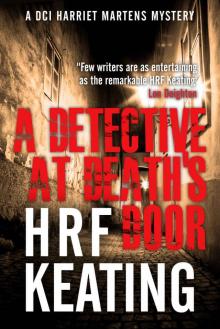 A Detective at Death's Door
A Detective at Death's Door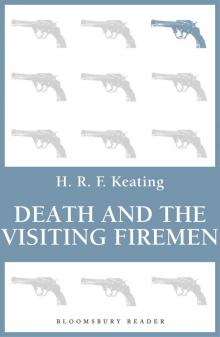 Death and the Visiting Fireman
Death and the Visiting Fireman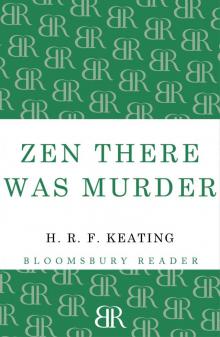 Zen there was Murder
Zen there was Murder